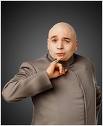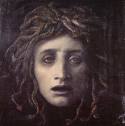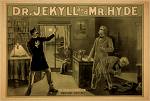Kicking things off today, I’m thrilled (no pun intended—sorry) to announce a SUPER DUPER BRAND NEW CONTEST. We’re holding a giveaway this week:
Comment on our posts from now through next Wednesday, and we here at The Kill Zone will toss your name in the hat for a $50 gas card. I know, that’ll buy you what, roughly 2 gallons? Hey, don’t blame us. We’re not the ones gouging, just a loveable group of writers trying to give your wallet a break…
And now, on to…BAD VILLAINS
We’ve all seen them. Those beady-eyed little guys wringing their hands as they chortle (ever notice that? Heroes never, ever chortle. The minute a character does that you just know he’s evil). They generally want to take over the world, but might be willing to settle for killing someone in a particularly terrible way. And they’d just love to tell you all about it first. One classic bad villain trait is that they live to hear themselves talk. In my humble opinion what made the Austin Powers films so funny was the “Dr Evil,” character, who epitomized every bad villain cliché. (Remember the group therapy scene with his son? “My childhood was typical. Summers in Rangoon, luge lessons. In the spring we’d make meat helmets. If I was insolent, I was placed in a burlap bag and beaten with reeds. Pretty standard, really.”) Hannibal Lecter was scary, sure, but the ultimate villain has to be Dr. Evil. Who else could come up with an “evil petting zoo?”
the Austin Powers films so funny was the “Dr Evil,” character, who epitomized every bad villain cliché. (Remember the group therapy scene with his son? “My childhood was typical. Summers in Rangoon, luge lessons. In the spring we’d make meat helmets. If I was insolent, I was placed in a burlap bag and beaten with reeds. Pretty standard, really.”) Hannibal Lecter was scary, sure, but the ultimate villain has to be Dr. Evil. Who else could come up with an “evil petting zoo?”
For me at least, villains are the most difficult characters to create. The heroes and heroines, laughable/loveable sidekicks, and victims are easy, I could practically write those in my sleep (well, not really. But you know what I mean).
But a villain that comes off as frightening and not comical is a far different beast. It’s all too easy to slip into mwa-ha-ha mode. Worse yet is to have them engage in “monologue-ing,” explaining monotonously why they’re doing what they’re doing, and how they’ll get away with it (when of course, that discourse inevitably leads to their downfall).
It’s ha rder still to avoid clichés. After all, since the beginning of recorded time nearly every story has featured a villain, from Medusa to Iago to Mr. Hyde. Joe’s post yesterday noted how many classic villains are fairly interchangeable. And that’s precisely the problem: how do you make your villain new and unique, not just another Hannibal-esque hybrid?
rder still to avoid clichés. After all, since the beginning of recorded time nearly every story has featured a villain, from Medusa to Iago to Mr. Hyde. Joe’s post yesterday noted how many classic villains are fairly interchangeable. And that’s precisely the problem: how do you make your villain new and unique, not just another Hannibal-esque hybrid?
In my latest book, Boneyard, I had a particularly hard time. One of my villains came to life easily. I added some traits to him in successive drafts, but felt like I nailed him down without too much trouble.
And then there was the other guy. Man, he was a problem (serves me right for having two bad guys, I suppose). I had done voluminous research on serial killers in an attempt to make him as believable as possible, but kept encountering the same pitfalls. I felt at times like I was making villain soup, adding a pinch of Bundy and a dash of Dahmer, but he still seemed bland. Up until the final draft I cast him as a religious fanatic, quoting scripture to explain his motivation. But every time I r ead over his dialogue I found myself squirming. It felt very forced and contrived, never a good thing.
ead over his dialogue I found myself squirming. It felt very forced and contrived, never a good thing.
Someone once said, “the villain is the hero of his own story.” It’s an important thing to remember. We’ve all known people who have been able to justify terrible acts to themselves. They did it for the greater good, or they didn’t have a choice. To me, those are believable villains.
So I slashed away with my red pen, leaving far more of his motivations to the reader’s imagination. In the end, I was happy with him. But with every book the problem must be freshly confronted. I’m wrestling with a different guy now, a real slimeball who’s motivated both by greed and hatred. Yet at the moment he’s more whiny than scary, not a good thing. And he keeps pulling at his handlebar moustache and asking about the rent, which is just annoying. Ah well. Hopefully I’ll get him by the line edits…
So, dear reader, what say you? Who’s your favorite “bad villain,” and why?![]() Remember: comment and your car might thank you for it later. Tune in next Thursday when I announce the winner and ponder why Second Life avatars only seem to come in one breast size.
Remember: comment and your car might thank you for it later. Tune in next Thursday when I announce the winner and ponder why Second Life avatars only seem to come in one breast size.


Hands down.
Darth Helmet.
cmr
>Someone once said, “the villain is the hero of his own story.”
That’s great advice, Michelle.
Does it have to be a REAL comment?
Does anyone else still cry when the Abominable Snowman bops Rudolph on the head making his eyes go all wonky?
Love the “villain soup” image, Michelle!
My favorite villains are the half-and-half kind, like the sensitive, highly moral hit men of Lawrence Block and Barry Eisler, or the “only kill serial killers” serial killer Dexter Morgan.
Makes me think I could be one. Uh-oh.
Everything you say about the difficulty of writing villains is all too true, Michelle. I hate reading scenes from the killer’s POV because they’re usually either laughable or so sick and sleazy and revolting that I have to wonder about the *writer’s* mental state. Even the most experienced, most talented writers seldom write convincingly from the killer’s viewpoint.
I like killers who are ordinary people driven to extremes by something that’s happened in their lives. Most readers can identify with someone like that.
The villain I love the most is Moriarty. Your villain must always be a worthy opponent. Always.
I don’t know I think Dr. Horrible is pretty great. But then a lot of the Whedon villians end up great, look at The Mayor…
I like to write and read stories with antagonists who are not intrinsically evil. People who are borderline, but functional, then they encounter something they just can’t handle and it tips the balance. They commit crimes out of fear, anger, and frustration, not for pleasure. These are my favorite bad guys. — Lj
Okay, fine, David: we’ll count your comment even though you of all people should have no problem rattling off a list of villains!
And I love the other entries: Darth Helmet absolutely, and Moriarty and the Mayor (although Spike remains my favorite Whedon creation). And I can’t wait to see what kind of trouble “Evil Minichino” gets into…
Upon further thought, I would have to say I love the rogue’s gallery Batman has going on. It’s so much fun to have villians and heroes who are so deceptively close to each other psychologically speaking. I think that what really makes the villian scary is when you can really identify with their humanity it’s makes the evil things they do even more horrifying.
Personally I like …or should I rephrase that as “I find interesting” … villains who are either seriously evil and powerful enough to act on their evil(The big eye thing in Lord Of The Rings for example) or villains who are only villains by the perspective of the folks on the other side.
By that last bit I mean, villains from “Enemy” countries or organizations who see themselves (and are seen by their people..at least at first) as heroes but to all others outside their sphere of patriotic purpose they are most decidedly the bad guys.
Hitler afterall was very well loved by his people for the first six or more years now he personifies evil.
In my own writing the bad guys are bad by perspective, or by greed, or in one case by just sheer pleasure in being bad.
I thought and thought but could not come up with a favorite on my own until finally I thought of “The Four Just Men”. I love them and all the books about them. Are they really villians or heros?
I found your blog really helpful. I have a villain in my story, but I haven’t fleshed him out yet. I think I’m not sure how to do it.
So you gave me some food for thought.
Marilynne
Gram- I have to confess, I’ve never heard of the “4 just men.”
I still find myself murmuring, “Call it, friendo.” In my opinion the character was a villain of such colossal proportions that his only redeemable value was he always kept his promises…such as they were. And I wonder if I can watch Javier in his new fun, sexy movie without thinking of those dead, black eyes in “No Country For Old Men.” A sociopath/psychopath villain extraordinaire.
I like to use the ‘Flight or Fight’ theory when developing my characters. Starting them at their pure, raw emotional level Good guys/gals need the ‘fight’ and the bad guys/gals need the ‘flight’. All of my characters have goals and motivations. Deep down, do they have what it takes to win in the end? The good guys/gals do.
I’ve blogged some more about this a while ago. I build my villian’s personality, experiences and motivations around the ‘flight’ emotions. They have spent their life wanting to be the hero, to have the ‘fight’ response. But, they don’t. It’s not a natural instinct. You can’t change the raw emotion. So, they spend their life recognising those who have the ‘fight’ response and doing what it takes to knock them down. It’s all they can do to prove to themselves that they are better then the ‘fight’ personality.
Give your bad guys/gals all of the tools necessary to defeat the good guy/gal. All except one – that raw emotion of the ‘fight’.
Just my theory, though.
Great blog, team.
JJ
Wow JJ…that’s deep. Really good creative process. Now I won’t be able to think simply about the villains I create anymore.
Thanks for piece of wisdom…
Thanks, Basil. More than welcome.
It’s something I spent a lot of time on during my interrogating days. Just adapting it now to my writing.
JJ
Here’s a website to help you overcome the usual Evil Overlord blocks, written from the perspective of an Evil Overlord explaining what he *won’t* do.
It made me laugh, but he’s got some great points!
http://www.proft.org/tips/evil.html
I enjoy Hannibal Lector’s evilness. He encompasses the whole ‘hero of his own story’ method. He doesn’t kill people because he wants to, he kills them because of their own actions. (at least in his evil mind)
I’ve always been fond of Snidely Whiplash, the vile archvillain of Dudley Do-Right of the Mounties segments of The Rocky and Bullwinkle Show. Isn’t he the very embodied spoof of the bad villain?
Love the evil overlord site, Fran, thanks for sharing it!
And Snidely is a good one…
Most interesting post. I think every human being has the potential for being a ‘villain’ – it just depends on whether or not that for which he is willing to commit horrible acts and even die is considered societally acceptable at that particular place and time.
As another commenter said, every villain is the hero of his own story. Think of all the stories where a character overcomes tremendous odds, battles everyone in his way, follows his own moral compass instead of the one imposed by society/law and does whatever he thinks necessary to attain his goal. That could describe either the hero or the villain.
For some reason I find that very scary. Snidely Whiplash is so much more comfortable.
I don’t have a favorite single villain, but I have a favorite author who does great twisted villians – Jeffrey Deaver
Mary Ellen Carmody